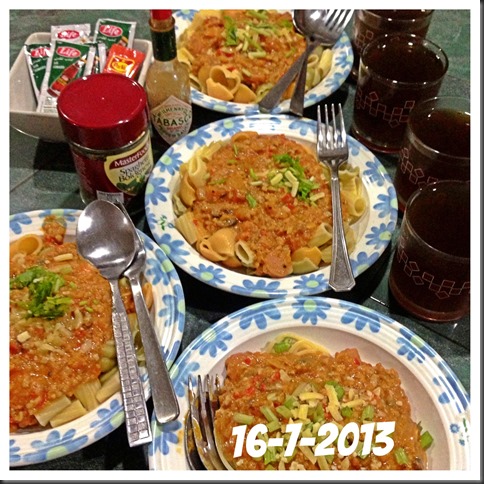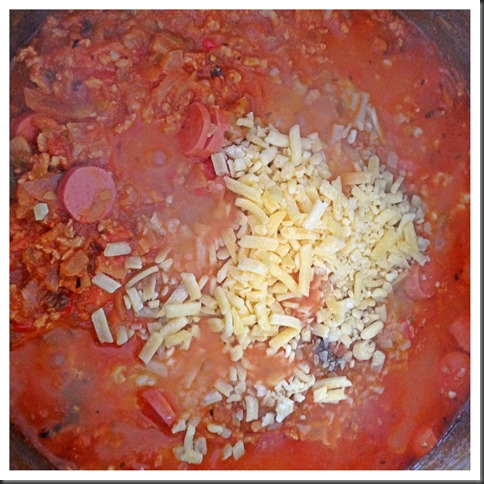
You may be surprised about this title! In fact, the title is not correct either. What I am going to post is not “what I cooked today” or “what I ate today”. It was a gathering at one of my relative’s house and she had cooked some Chinese dishes that are not common among Fujian or Guangdong Province.
My relative is from Jiangxi Province and therefore the food that she cooked were rather different! As you all know, Singaporean and Malaysian Chinese are descendants of immigrants mainly from the South Eastern Coastal Fujian and Guangdong Province.
JIANGXI CUISINES
Per Wikipedia:
Jiangxi (Chinese: 江西; pinyin: Jiāngxī; Wade–Giles: Chiang-hsi; Postal map spelling: Kiangsi, Gan: Kongsi) is a province in the People’s Republic of China, located in the southeast of the country. Spanning from the banks of the Yangtze River in the north into hillier areas in the south and east, it shares a border with Anhui to the north, Zhejiang to the northeast, Fujian to the east, Guangdong to the south, Hunan to the west, and Hubei to the northwest. (http://en.wikipedia.org/wiki/Jiangxi)
As compared to Nanyang Chinese (Malaysian and Singaporean Chinese), in a household meal, they are more dishes but with a smaller portion. For us, we will usually serve 3 dishes and 1 soup, for them the dishes can be as many as 6-12 dishes. Today, the host is kind enough to cook us 7 dishes (excluding desserts and sweet soups). Jiangxi dishes were rather spicy (chilli hot) and as my kids were having meals with us, for some dishes, they have to prepare both the spicy and non spicy version.
Note than I am currently on a vegetarian diet and since I did not told them in advance, I have taken my meals before joining them. Therefore, I did not join them for meals.
SPICY AND SOUR SHREDDED POTATOES (酸辣土豆丝)

Yes, this is my favourite. Potatoes were julienned into thin strips. There were then soaked in cold water until all the starch were gone. This will make the potatoes “crunchy” and water have to be changed regularly. Look at the thin strips, these were all manually done. They were then stir fried with spring onions, black vinegars and chilli. This is something that I have yet to share the cooking illustrations with readers but I can assure you it is something simple yet the taste is superb. Kids are fighting for this.
BRAISED BEEF (酱牛肉)

I do not know if there is any translation of this dish. It is basically beef braised in dark soya sauce (and herbs and spices). It was then air dried. If it was kiln dried, it will become smoked beef. This is a form of meat preservation that can be commonly found in many parts of China. My relatives have prepared these meat in China and brought it over.
I still remembered when I was stationed in Changchun, China about 10 years ago, one of the past time is to buy some braised chicken drumsticks and ate it in the hotel. It is delicious and thinking about it make me drooling. Depending on the regions, the preservations can be sugar based or salt based.
TOMATOES FRIED WITH EGGS (番茄炒蛋)

A common household dish in China. Besides stir frying, another way of cooking this combination is making it into a soup.
Tomato is not a common vegetable in my traditional house cooking. Tomatoes are considered vegetables imported from other countries (though this may not be true any more). This is evidenced in its Chinese name literately translated as Western Persimmon (西红柿)or Foreign brinjal (番茄)。In Hokkien dialects, it was called Caucasian Brinjal (angmokio)! Therefore, my mom seldom cooked tomatoes in the house.
As my girl is a tomato fanatic, this will definitely her top choice. However, as my boy is tomato phobia, this is definitely a good dish to make my boy eating tomato. Though he is a tomato phobia but he is an egg fanatic. I usually requested that if he wanted to eat 2 tablespoons of eggs, he will need to finish 1 tablespoon of tomatoes. Haha
STEAMED CHINESE SAUSAGE WITH CHINESE BLACK FERMENTED BEANS (腊肠蒸豆豉)

The Chinese sausages were prepared by my relatives in China and brought it over. You can hardly find any fats in the Chinese sausages. Before I am on my vegetarian diet, I have tried the sausages before and it is delicious.
The Chinese sausages were cut into slices, steamed with Chinese black fermented beans and chopped garlics. May be after my vegetarian diets end, I shall cook this. Good thing about having this post is that it can remind me of what I should cooked when I run out of ideas.
PIGTAILS PORK BELLIES SOUP (猪尾猪肚汤)

I never have this combination before, pork bellies plus pigtails. The reason is because both meats have different cooking times. You know pork bellies are rather difficult to cook until soft. So, it is not easy to cook this soup. Even if you used pressure cooker, both items will have to be cooked separately. There is no vegetables or white peppers. It is pure meat broth!
If you ask me whether it is yummy or not, of course, I can’t tell you directly because I did not taste it. However, from my years of cooking experience, I can tell you that it is a good soup because the soup had turn milky meaning all the gelatine from the meat have been dissolved in the soup/broth.
Don’t believe me, freeze it and you will see that it become jellish and you can use a knife to cut it into small pieces. Teochew dialect group also have a dish that after braising certain meat for a long time, they cut the meat into very small pieces, freeze the broth and become a jelly. The jelly was then cut into small pieces and served as cold dish (猪头粽)
STIR FRIED CHINESE WATER CRESS (清炒西洋菜)

I remembered when I told my mother in law and wife to stir fry water cress previously, they are against it as they always used water cress to cook soup. It is generally true that most Chinese dialect groups like to boil soup with this vegetable. However, when I travelled to China, I always have stir fried water cress in restaurants. Usually, this vegetable were stir fried using garlic without any other ingredients.
Try and tell me whether it is nice or not! Remember that you have to stir fry the vegetables using high heat, otherwise, it may be bitter.
STEAMED KUDZU FLOUR COATED PORK WITH PUMPKIN (南瓜米粉肉)

When I asked for the name of the dish, I was told “namguamifenrou”. However, I can’t find any rice vermicelli or Beehoon. Later she explained the 米粉 is not rice vermicelli, it means “rice flour”. Though the name is called rice flour, the coating of the meat can be any types of flour. It can be corn flour, sweet potato flour, potato flour and etc.…But today the flour that she used is kudzu flour (葛根粉). Again this is brought from Jiangxi and she disclosed that this was made from wild kudzu roots.
Kudzu has many health benefits and among them are relief symptoms of postmenopausal women, reducing alcohol intake, alleviating cluster headaches, managed metabolic syndromes etc. etc. etc. In Singapore, we do have a type of Chinese instant flu medicine called Kudzu soup (葛根汤) that you consumed when you have a fever and it is believed that it will help to reduce your body temperature. You may want to know more about kudzu from here.
Coming back to the dish. Meat were seasoned and coated with kudzu flour. The meat was then placed on top of the pumpkins and steamed under high heat until the pumpkins were soft. The purpose of the flour is to retain the meat juiciness in the process of steaming. Any meat juices that escaped will dripped into the pumpkins those flavoured the pumpkins.
Lastly, I want to convey my sincere thanks to my relatives who cooked us a sumptuous meal and we really appreciate that.
Hope you like the post today and I find this post is meaningful to share with readers about other different types of Chinese cuisines.
Have a nice day and cheers.












![group-board-picture72222222222222222[1] group-board-picture72222222222222222[1]](https://kwgls.wordpress.com/wp-content/uploads/2014/03/group-board-picture7222222222222222214.jpg?w=490&h=249)
















































 pic source:
pic source: 























































